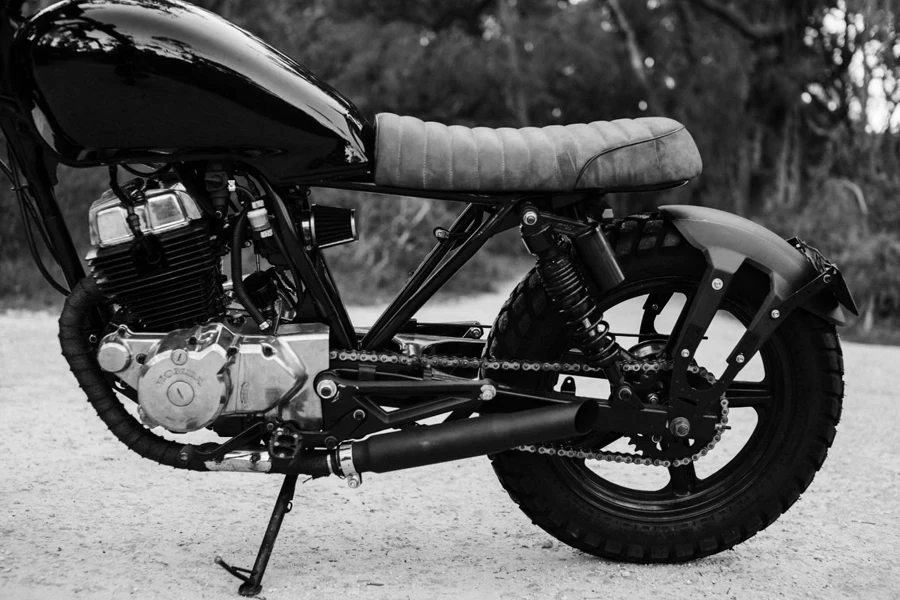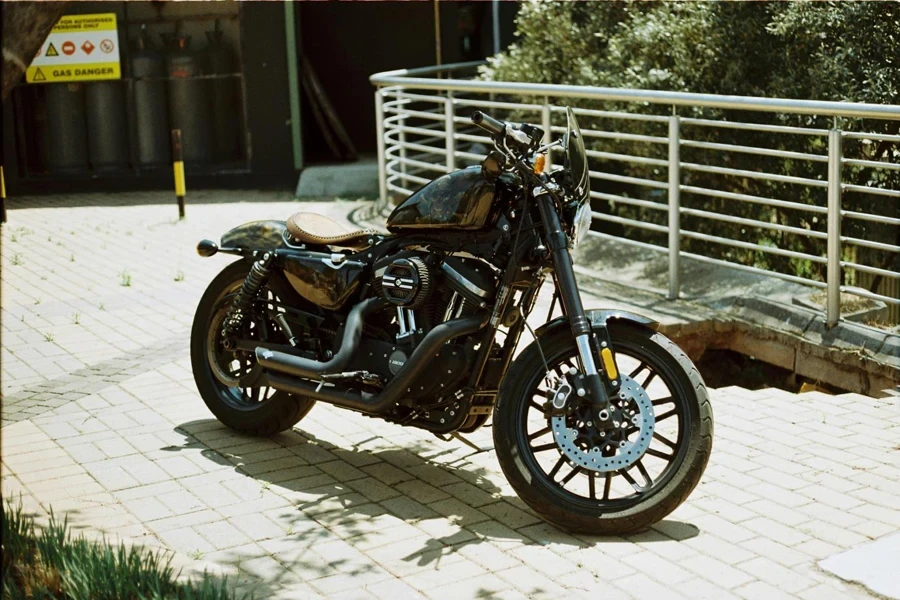Table of Contents
● Introduction
● Market overview
● Different types of car chargers and their features
● Things to consider when selecting products
● Conclusion
Introduction
Selecting the right motorcycle tires is crucial for enhancing performance, ensuring safety, and maximizing the overall riding experience. Motorcycle tires are the only contact point between the bike and the road, directly impacting traction, stability, and control. The market offers a diverse range of tire options tailored to different riding styles and conditions, making informed choices essential. High-quality tires provide better grip, handling, and durability, which are vital for both everyday commuting and adventurous off-road trips. For instance, radial tires are preferred for high-speed road riding due to their superior performance, while off-road tires are designed for rugged terrains with strong construction and enhanced grip. Additionally, staying updated with market trends and technological advancements, such as airless tires and sustainable materials, can help riders make the best decisions for their specific needs. The importance of matching tire type to riding needs and bike specifications cannot be overstated, as the right tires can significantly improve fuel efficiency and reduce emissions. Ultimately, the right tires can transform a motorcycle’s capabilities, offering riders confidence and control on any journey, ensuring a safer and more enjoyable ride.

Rachel Claire
Market overview
The global motorcycle tire market has been experiencing robust growth, with the market size valued at USD 10,033.7 million in 2022 and projected to reach USD 17,121.4 million by 2030. This growth reflects a compound annual growth rate (CAGR) of 7.10% from 2023 to 2030, according to Kings Research. Several factors drive this expansion, including the increasing sales of high-end motorcycles and the growing popularity of leisure motorcycling. The demand for tires with high mileage, puncture resistance, and enhanced performance is particularly strong in developing regions with challenging road conditions.
Technological advancements and innovations play a crucial role in this market’s growth. Companies are leveraging cutting-edge technologies such as artificial intelligence and machine learning to create tires that offer better grip, handling, and durability. There is also a significant push towards environmentally sustainable products, with manufacturers like Michelin, Bridgestone, and TVS developing tires using sustainable raw materials and green recycling methods. According to Global Market Stats and Figures, the motorcycle tire market is expected to grow significantly, with the global top five players holding a combined market share of approximately 40% in 2023. Additionally, the market in China is projected to grow at a CAGR of 8%, while the European market is expected to see a growth rate of 6% over the same period. These advancements and strategic investments are essential for expanding distribution channels and enhancing product offerings to meet both performance and environmental standards.

Different types and their features
Motorcycle tires come in various types, each designed for specific riding styles and conditions. Understanding these types and their features is essential for choosing the right tires for your motorcycle.
Road tires
Road tires are primarily designed for high-speed road riding and are available in two main constructions: radial and diagonal (bias-ply). Radial tires are favored for their superior performance at high speeds due to their flexible sidewalls, which provide better heat dissipation and a larger contact patch. This leads to improved grip and handling, making radial tires ideal for sport riding on paved roads. Diagonal tires, while less common, are still used for their durability and load-carrying capacity, making them suitable for heavy motorcycles and long-distance touring.
Touring tires
Touring tires are known for their versatility and performance across various weather conditions. They are designed to offer a comfortable ride over long distances, with an emphasis on durability and stability. Touring tires typically feature deeper tread patterns to enhance traction in wet conditions, and they are built to withstand varying road surfaces. However, these tires compromise on sport riding characteristics, offering less aggressive cornering capabilities in exchange for better all-around performance.
Cruiser and chopper tires
Cruiser and chopper tires prioritize long continuous running time and excellent grip, particularly during extended rides. These tires often come with a high load index and reinforced construction to handle the heavier weight of cruiser motorcycles. The sidewalls of cruiser tires are usually stiffer, providing stability and reducing the risk of tire deformation under heavy loads. Additionally, these tires often feature a classic design, with white walls or custom tread patterns to complement the aesthetic of cruiser and chopper bikes.

Off-road tires
Off-road tires are built for rugged terrains and challenging conditions. They feature a strong construction with reinforced sidewalls to prevent punctures and damage from rough surfaces. The tread patterns on off-road tires are aggressive, with large knobs that dig into loose surfaces like gravel, mud, and sand to provide maximum traction. These tires are essential for adventure motorcycles and dirt bikes used in off-road racing or trail riding, where enhanced grip and durability are crucial.
Sports tires
Sports tires are designed specifically for racing and high-performance riding. They are optimized for conditions requiring precise tire pressure and temperature management to deliver peak performance. These tires often have a softer rubber compound and minimal tread patterns to maximize grip on smooth, dry surfaces. While sports tires offer exceptional handling and cornering abilities, their usability on public roads is limited due to their quick wear rate and the specific conditions they require.
Superfast tires
Superfast tires cater to riders who demand the highest performance on even, dry surfaces. These tires are engineered with specialized tread patterns that offer optimal grip and stability at very high speeds. The rubber compound used in superfast tires is typically very sticky, providing excellent traction but wearing out quickly. These tires are ideal for track days and high-speed runs, where their performance characteristics can be fully utilized.
Things to consider when selecting products
Choosing the right motorcycle tires involves several key factors to ensure safety, performance, and compatibility with your bike.

Safety and performance
Matching the tire type to your specific riding needs and bike specifications is crucial. Different tires are designed for different purposes, such as touring, off-roading, or racing, and using the wrong type can compromise both safety and performance. Manufacturer recommendations should always be considered, as they are based on extensive research and testing. Additionally, seeking professional advice can provide insights into the best tire options for your particular riding conditions and style, ensuring optimal performance and safety.
Tread and construction
Understanding tread patterns and their impact on grip and control is essential. Tread patterns vary widely between tire types, with deeper patterns providing better traction in wet conditions and more aggressive patterns enhancing grip on loose or rugged surfaces. The construction of a tire involves several components, including the tread, carcass, bead, and sidewall. Each component plays a role in the tire’s overall performance. For instance, the carcass provides structural strength, while the bead ensures the tire stays securely on the rim. The sidewall affects handling and ride quality, with stiffer sidewalls offering better stability and softer ones providing a more comfortable ride.
Tire markings
Reading and interpreting tire markings is vital for selecting the right tire. Markings on the tire indicate its width, aspect ratio, construction type, and diameter. For example, a tire marked “190/70 R17” means it is 190 mm wide, has an aspect ratio of 70%, is a radial construction (R), and fits a 17-inch rim. Understanding these markings helps ensure you choose a tire that fits your motorcycle correctly and meets your riding needs.
Practical considerations
Deciding between tubeless and tube tires depends on your wheel type. Tubeless tires, which are generally preferred for their ease of repair and better performance, are suitable for alloy wheels. On the other hand, tube tires are necessary for spoked wheels, which cannot be made airtight. The choice between radial and bias-ply tires also depends on your riding style. Radial tires are ideal for high-speed, sport riding due to their flexible sidewalls and larger contact patch, while bias-ply tires are better suited for heavy loads and long-distance touring. Additionally, selecting the right tire size and aspect ratio is crucial for maintaining ride quality and handling. A tire with the correct size ensures proper fitment and optimal performance, while the aspect ratio affects the tire’s height and overall suspension characteristics.

Conclusion
Choosing the right motorcycle tires is vital for ensuring safety, optimizing performance, and enhancing the overall riding experience. The appropriate tires provide the necessary grip, handling, and durability essential for various riding conditions, from daily commutes to off-road adventures. Ensuring that the tire type matches the specific riding needs and bike specifications can significantly impact the rider’s safety and the motorcycle’s performance. Considering factors such as tire construction, tread patterns, and the correct size and aspect ratio is crucial. Radial tires, for example, offer superior performance for high-speed riding, while off-road tires provide the necessary traction for rugged terrains. Understanding tire markings helps in selecting the right fit, ensuring that the tires meet the specific requirements of the motorcycle. Additionally, adhering to manufacturer recommendations and seeking professional advice can guide riders in making informed decisions. Investing in high-quality tires that align with your riding style and conditions not only enhances safety but also contributes to a more enjoyable and confident riding experience.




